This spring has been very mild. Milder than we have ever experienced here. We need a parasol to sit in the sun on the patio to have lunch.
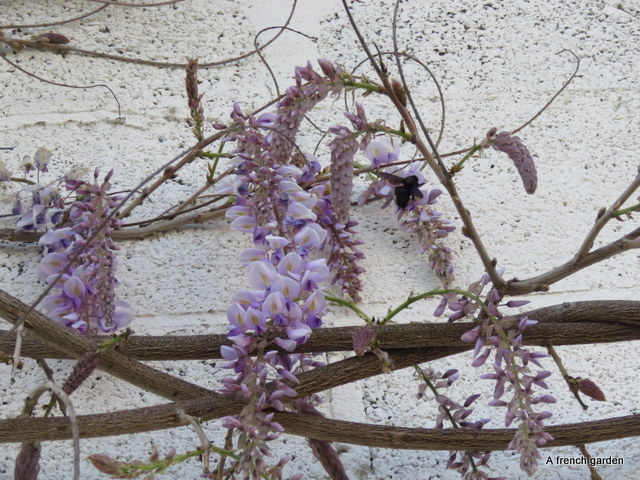
The Wisteria has already started to flower on the atelier wall and the Carpenter bees are in their element.
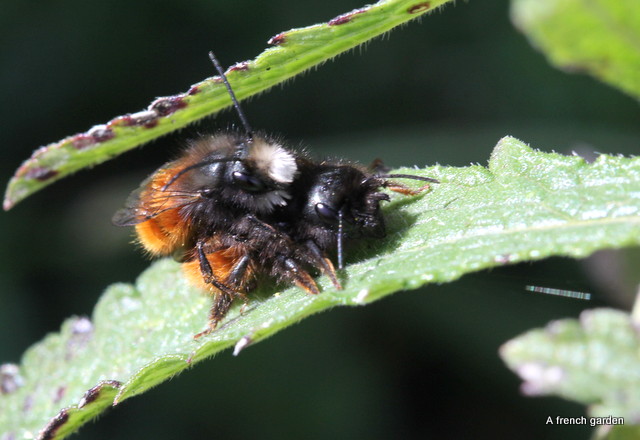
The Osmia cornuta have had perfect weather this year. The males are all gone now but not before coupling with plenty of females. The little chap with the cute white fringe in the photo above is the male Osmia. The female was very compliant perhaps because it was warm and the leaf was very comfortable.
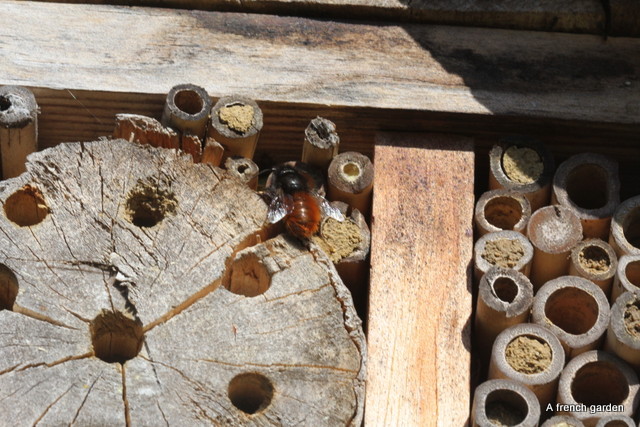
The females are busy building their nests and putting on a great show for our friends passing in front of the bee houses.
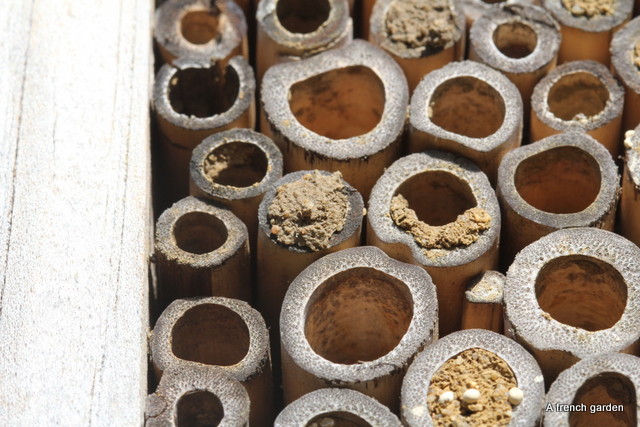
Some bees are so enthusiastic with the tube filling that the tubes have a convex finish.

The boxes also attracts other insects. I am not sure what this fly is doing but I view it with suspicion as there are many insects that are parasites of the Osmia.

This wasp may just be looking for a place to nest, or yet again to leave its eggs to hatch in a nest which will soon provide a delicious Osmia larva to feed the wasp’s young.
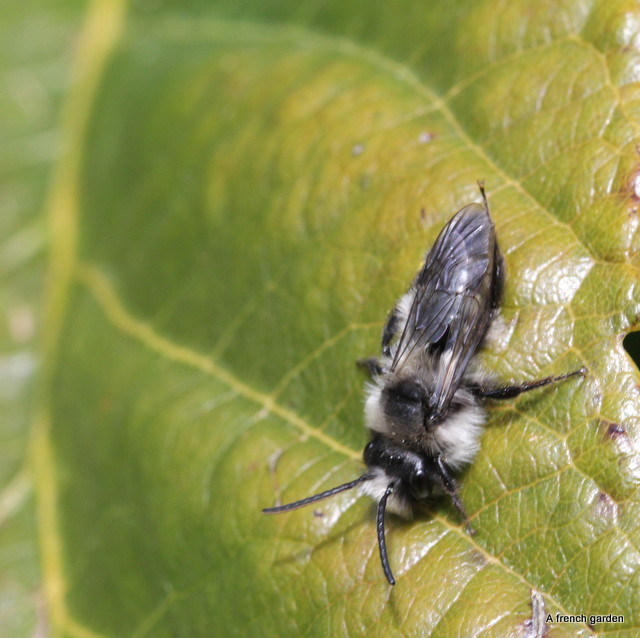
I think this is a male Andrena cineraria as I have the females provisioning their nests under our big plum tree, as they do every year. These bees are called mining bees as they dig tunnels in the ground in which to lay their eggs.

However, this year I am seeing many more of their cuckoo bees. These bees belong to the genus Nomada and will follow a female Andrena cineraria back to her nest site. It will then try to find the nesting hole of these mining bees and lay its eggs inside. The action is just like the cuckoo who lays its eggs in the nests of other birds and so takes no further responsibility for bringing up its young.
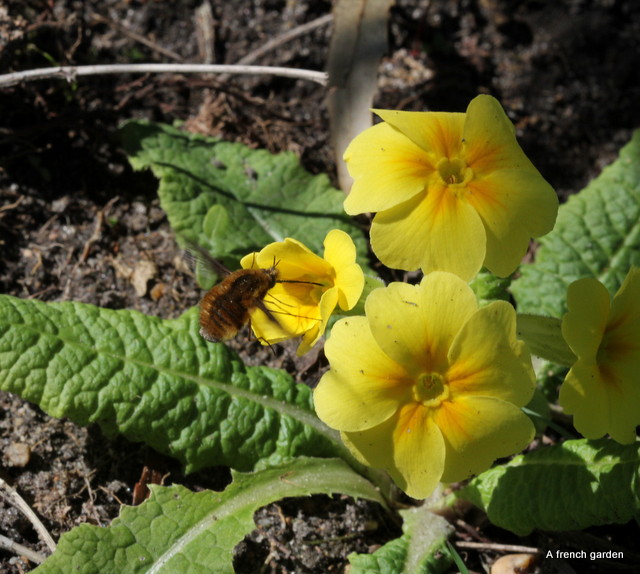
The other insect I see often over the mining bees nest site is this cute looking fluffy insect. It is not a bee but a Bombylius or bee fly which is also a parasite of the mining bees and other solitary bees. Life is not easy for the solitary bees.

Our honey bees are having it easy at the moment with lots of nectar on offer.

The Camelia is full of flowers and offers both nectar and pollen and a pretty picture for us.

The Viburnum tinus does a great job at the moment, providing nectar for all comers. This is a Speckled Wood butterfly but it also attracts the queen Asian hornets which we try and trap before they can build their nests.
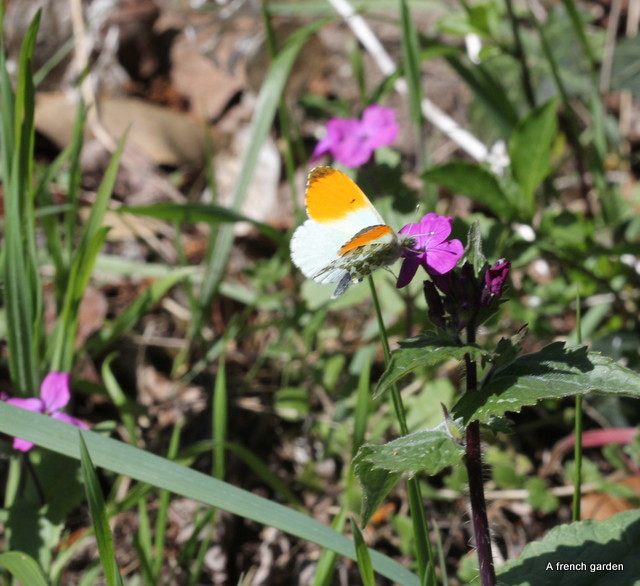
I’ll just pop in this photo of an Orange Tip butterfly on the Honesty in case people get the correct impression that I am besotted by bees.

I do appreciate the occasional flower that does not attract bees. These tulips are almost white when they first appear and every year I say to myself, “That’s strange, I am sure they were a deeper pink last year.”

After just a few days they take on a much deeper tint.

Elsewhere in the garden spring continues with the trees unfolding in sequence. At the moment the Ash-leaved Maple is putting on its show.
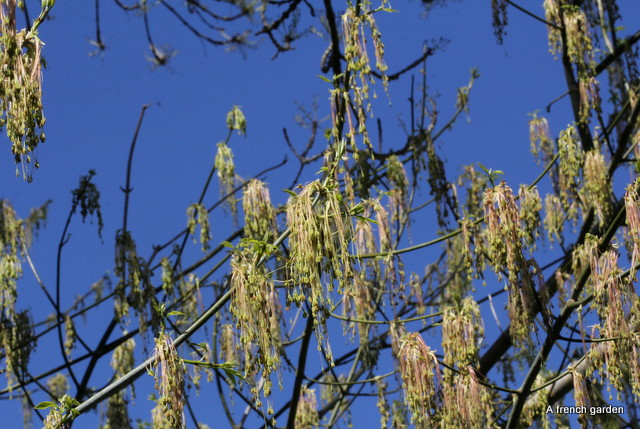
I like the tassels and the leaves will shelter us from the sun at a favourite sitting place in the summer.
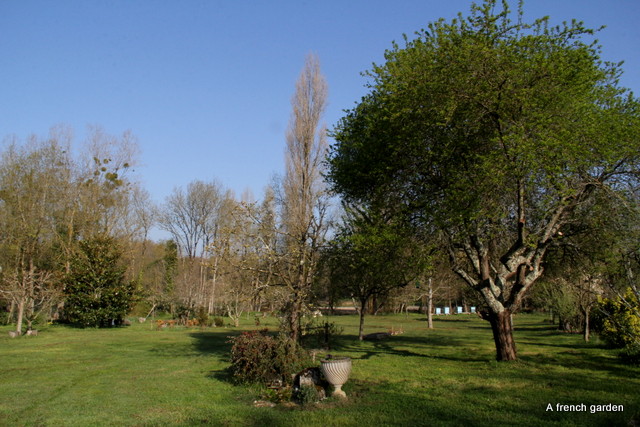
The big plum tree in the back garden is full of new leaves.
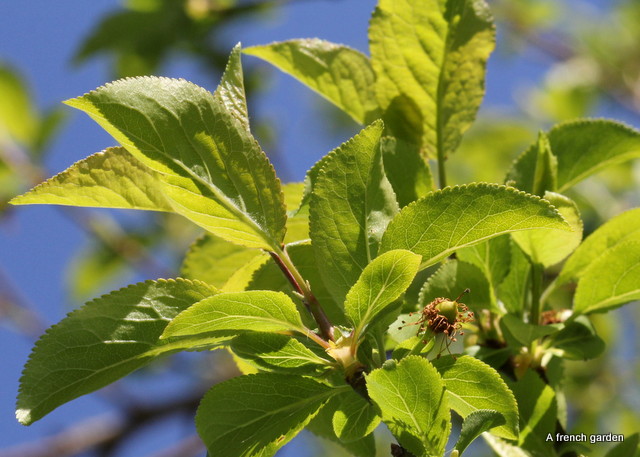
In places the flowers have withered to reveal the tiny beginnings of the plums. The question here at the moment is what will happen to the plums, apricots and cherries this year? For the last two years the frosts have destroyed all the plum flowers or new fruits and we have had no plums.
Our daytime temperatures have been in the low 20 degree centigrade with blue skies but the night time has dropped to 2 or 3 degrees.





